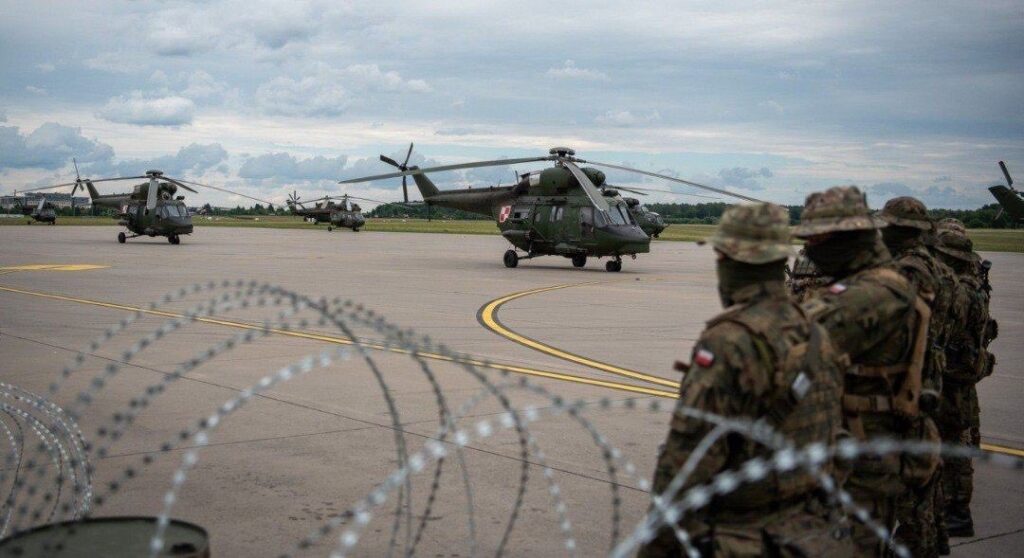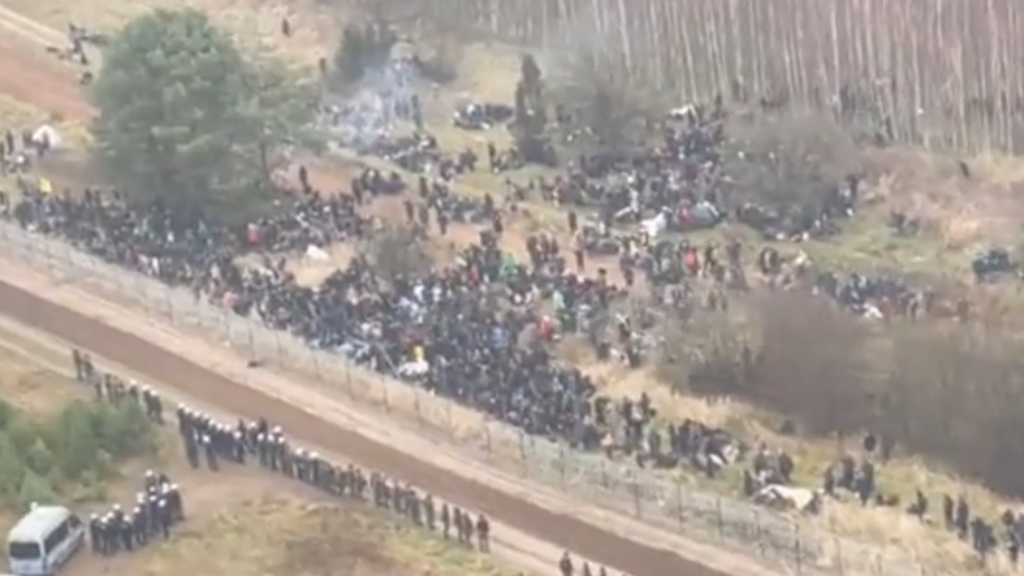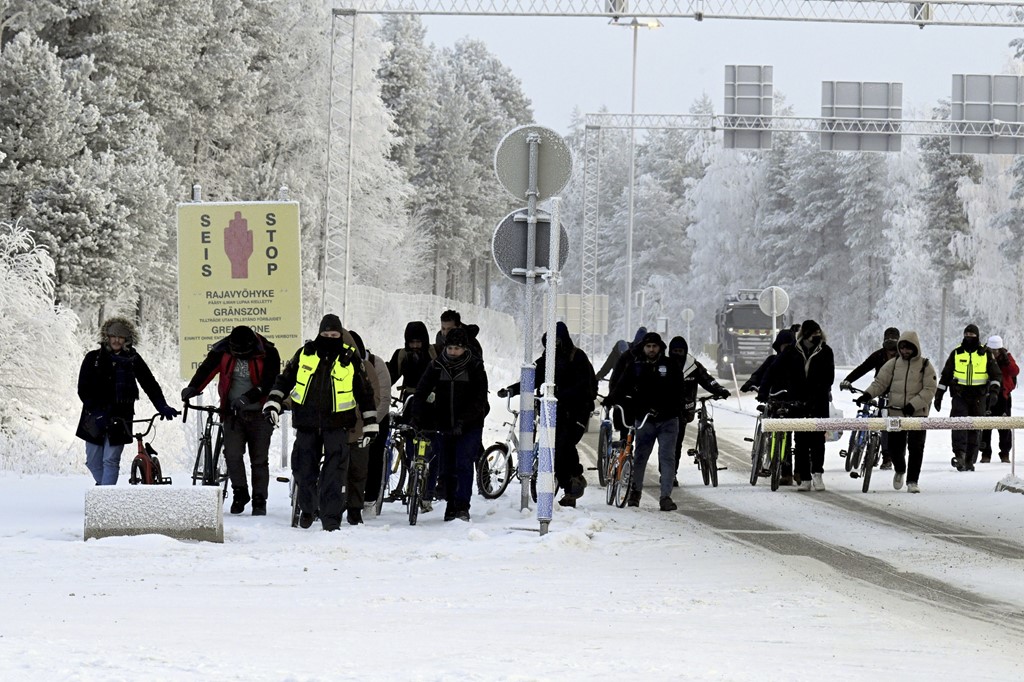Since early–mid 2025 authorities and analysts have flagged an unexpected rise in air traffic linking eastern Libya (notably Benghazi) and Minsk. European institutions are alarmed because the pattern resembles earlier Belarus-mediated migration operations and coincides with an intensification of Russian military, paramilitary, and logistical activity in Libya. The phenomenon is plausibly driven by a mix of: (a) Russia’s search for new basing/logistics hubs and routes after reorganizing its private military footprint abroad; (b) Belarus’ use of long-range charter links as part of geopolitical levers (migration diplomacy, mercenary movement, or commercial linkages); and (c) commercial/illicit movements (chartered passengers, cargo, and smuggled commodities). The surge carries acute migration, sanctions-evasion, and security risks for the EU and regional states.
1. What changed — the observable facts
- Multiple media and EU sources report a spike in flights between Benghazi and Minsk, flagged by the European Commission and national migration-monitoring bodies. Officials say the pattern resembles earlier Belarusian “migrant routing” operations (2021), but this time the departure hub is Libya rather than Turkey or the Middle East.
- Libya’s civil-war fragmentation means airports in the east (Benghazi and nearby fields) are under different control than Tripoli; operators and local power-brokers can authorize nonstandard charter activity. We have noted expanding Russian military and logistical activity in eastern Libya, and increased use of Libyan facilities by outside actors.
2. Why now — drivers and incentives
a) Russia’s operational reorientation and logistics needs
- After the reshaping of Russia’s proxy forces in Africa (Wagner → Africa Corps / increased MOD involvement), Moscow has been diversifying logistics nodes and basing options across the Mediterranean and Sahel. Libya offers airfields and ports that can host cargo and troop movements with plausible deniability. Russia renewed activity (equipment transfers, advisers, air shipments) to Libya in 2024–25.
b) Belarus’ foreign-policy toolkit (migration, charters, and political signalling)
- Minsk has a precedent of using organized travel flows and visa policies as a foreign-policy instrument (the 2021 migrant crisis). Opening or increasing direct charter links with Libya gives Belarus a lever to threaten or pressure EU partners, to move people or cargo, and to deepen practical ties with Moscow and friendly local actors. EU institutions have explicitly warned about the potential political use of such flights.
c) Libya’s local bargains — Haftarist east and weak governance
- Eastern Libyan authorities (and local militias aligned with Khalifa Haftar or independent commercial actors) control key eastern airfields and can profit from hosting foreign charters. The political fragmentation of Libya creates opportunities for external powers and private operators to negotiate landing rights and security at relatively low political cost.
d) Commercial and illicit markets (oil, smuggling, people-trafficking)
- Libya’s corrupt and fractured energy and transport sectors make it a hub for illicit re-exports (fuel, oil) and smuggling. Charter flights provide an efficient way to move people and goods that may be sanctioned, taxed, or otherwise restricted. Russia and its proxies have used similar mechanisms elsewhere to monetize influence.
3. Who is (likely) involved — carriers, intermediaries, and enabling actors
Libyan carriers and local operators
- The main Libyan airlines operating international services include Afriqiyah, Libyan Wings, BerniQ Airways, and Libyan Airlines; charter operators also operate irregular routes out of Libya. Flight-routing data platforms list these carriers as the main commercial actors flying from Libyan airports. Such carriers can be subcontracted for ad-hoc charters
Belarusian side and charter intermediaries
- Belavia is the national carrier of Belarus and maintains interline agreements broadly, but ad-hoc charter flights and non-scheduled charters are often handled by private Belarusian or third-country charter firms rather than by the national flag carrier directly. Recent reporting points to an increase in non-scheduled flights between Minsk and Libya rather than regular Belavia timetabled services.
Russian military/logistical actors and private contractors
- Evidence of Russian state and proxy presence in Libya (air shipments of equipment, fighters, logistics) is well documented. Russian cargo and military flights (sometimes using third-country leased aircraft or private cargo firms) have moved materiel into Libya in 2024–25. Private military contractors and GRU/FSB logistical networks may be using commercial charters for personnel rotation, logistics, or commercial covers.
Middlemen and smugglers
- A web of local brokers, militia chiefs, and international fixers often arranges charters, visas, and the onward transportation of passengers and cargo. These nonstate actors profit from weak oversight and can conceal the end destination or nature of cargo and passengers.
Note: precise operator names for each flight are often obscured by ad-hoc charters and shell companies; investigators typically rely on flight-tracking, passenger manifests, and bank/insurance trails to identify responsibility.
4. Why Libya specifically (strategic and practical reasons)
- Geographic proximity to Europe — shorter flights to Mediterranean EU states and the ability to route migrants by sea.
- Fragmented sovereignty — eases negotiation of landing rights with local strongmen rather than central government.
- Existing Russian footprint — preexisting logistics, political ties, and mercenary presence lower the marginal cost of extending activity there.
- Illicit economy — oil smuggling and subsidized fuel re-exports create revenue streams that can be monetized and conceal movement of funds or goods.
5. Implications, threats and risks
A. Migration weaponization and political pressure on the EU
- The pattern recalls the 2021 Belarus migration operation: sudden, politically-targeted flows strained EU borders and political cohesion. A Libya–Belarus axis can create new irregular migration routes into southern Europe (Italy, Greece), complicating EU border management and political unity. EU agencies have already flagged the risk.
B. Sanctions evasion and illicit revenue flows
- Charter flights can be used to move sanctioned individuals, equipment, or commodities (oil, weapons components) in ways that conceal the Russian state’s fingerprints. This undermines the efficacy of sanctions and allows actors to monetize conflict influence. Russia uses such workarounds elsewhere in Africa and the Middle East.
C. Operational/military use
- Air links allow rotation of paramilitary personnel, movement of advisers, and delivery of light materiel to friendly militias or bases — enabling a more permanent Russian/proxy presence in the Eastern Mediterranean and Sahel theatre. Such basing complicates NATO and Mediterranean security calculations.
D. Aviation safety and legal exposure
- Operating charters out of conflict-affected airspace risks safety for passengers and crew. Airlines or leasing companies implicated in dubious charters face reputational, insurance, and legal consequences. National regulators may sanction carriers involved in illicit flights, but enforcement is difficult.
E. Regional destabilization and illicit networks
- Profits from trafficking and smuggling fuel local militias, deepen corruption, and prolong conflicts (in Libya and beyond, e.g., Sudan or Sahel states). This increases migration pressure and undermines reconstruction.
6. Likely scenarios (short/medium term)
- Migration surge scenario (most immediate) — coordinated charters relocate vulnerable migrants to Belarus, who are then directed toward EU borders by land routes; EU experiences political shock similar to 2021.
- Dual-use logistics scenario — flights carry a mix of civilians, mercenaries, and sanctioned cargo; Russian/Belarusian actors gain sustained access to eastern Libyan airfields.
- Sanctions & investigation escalation — EU/US track flights, apply targeted sanctions on operators and brokers, and pressure Libya’s central government and eastern authorities to close routes — producing short-term disruption but possible long-term evasion tactics.
7. Recommendations (policy responses)
For the European Union & NATO
- Rapid monitoring and transparency: Combine flight-tracking (open-source and classified), passenger-manifest analysis, and port surveillance to identify suspicious charters. Share findings with member states quickly.
- Targeted sanctions & de-risking: Impose targeted sanctions on brokers, charter firms, and leasing/insurance companies knowingly facilitating illicit Libya–Belarus flights. Coordinate with third-country regulators to close loopholes
- Border readiness & humanitarian plans: Pre-position search-and-rescue and reception capacity in Italy/Greece; prepare contingency asylum and humanitarian responses to avoid messy political escalations.
For Libya (Government & International partners)
- Negotiate landing-rights transparency: Condition international assistance on transparent flight permits and manifest disclosure at eastern airfields. Use diplomatic leverage with eastern authorities.
- Crack down on smuggling networks: Support Libyan capacity to audit fuel/oil flows and disrupt illicit trade that finances militia cooperation with foreign actors.
For Belarus / International Aviation Regulators
- Investigate carriers: Require Belarusian aviation authorities and EU regulators to audit any carriers listed on suspicious routes and suspend operators found to facilitate illicit movement.
8. Caveats and intelligence gaps
- Opaque charter networks: Ad-hoc charters, shell companies, and bank-routing obfuscate responsibility — careful forensic work (financial, insurance, and flight-tracking) is needed.
- Local politics in Libya are fluid: Control of airports and local willingness to cooperate can shift quickly; scenario planning must allow for rapid change.
- Attribution caution: While patterns are worrying and reminiscent of prior Belarus operations, proving directed state-level coordination (vs. broker opportunism) requires evidence beyond flight patterns (communications, orders, payments).
The spike in Libya→Belarus flights is a red flag that combines migration risk, potential sanctions evasion, and Russia/Belarus geopolitical maneuvering in a permissive Libyan environment. The mix of local profiteering, Russian strategic interest in new logistics nodes, and Belarusian precedent for weaponizing travel flows creates a high-impact, plausible threat to EU border stability and sanctions regimes. Rapid, coordinated monitoring, targeted financial pressure on intermediaries, and contingency humanitarian planning are the priority responses.
The main purpose of sending migrants from Libya to Belarus is to use migration as a geopolitical weapon — a tactic the Belarusian regime (with Russian backing) has employed before.
1. Pressure on the EU and NATO Borders
- Destabilization strategy – By channeling migrants toward the Polish, Lithuanian, and Latvian borders, Minsk and Moscow aim to create humanitarian, political, and security crises in EU states.
- Divide and distract – EU countries are forced to shift political energy toward migration control instead of maintaining unity on Ukraine sanctions and military aid.
2. Retaliation for Sanctions
- Minsk uses migrant pressure as punishment against the EU for sanctions imposed after the 2020 Belarus presidential election fraud and repression.
- Russia supports this as part of a hybrid warfare toolkit, responding to Western measures over Ukraine.
3. Information Warfare
- Belarus and Russia can frame EU countries as inhumane in domestic and global propaganda, showing images of migrants stranded in forests or facing border guards.
- Pushes a narrative that Western democracies are hypocritical on human rights.
4. Economic Benefits for Local Networks
- Migrant transport is run by state-linked and private smuggling networks, generating revenue for elites in Belarus, Russia, and Libya.
- Charter flights from Libya to Minsk can be profitable, especially when coordinated with travel agencies and human traffickers.
5. Strengthening Ties with Rogue States
- Cooperation with Libya’s eastern authorities (linked to Khalifa Haftar) deepens Belarus–Russia–Libya alignment against Western influence.
- Gives Minsk more control over an irregular migration corridor independent of Turkey or Middle Eastern routes.
6. Escalation Option
- Migrant flows can be turned on or off depending on the political needs of Minsk or Moscow — making it a flexible pressure tool.
We can make a reasonable estimate based on air capacity, route availability, and past migration operations.
1. Air Transport Capacity from Libya
Eastern Libya’s key airports under Khalifa Haftar’s control:
- Benina International Airport (Benghazi)
- Al Abraq International Airport (Al Bayda)
- Tobruk Airport
- Labraq Air Base (military, but can be adapted for civilian/mixed use)
Typical charter aircraft types for such routes:
- Airbus A320 / Boeing 737: ~160–180 passengers per flight
- Wide-body aircraft (A330, B767), if used: ~250–300 passengers per flight
If 2–3 daily charter flights are scheduled from Eastern Libya to Minsk, and each carries 170 passengers on average:
170×3 flights/day=510 passengers/day170×3 flights/day=510 passengers/day.
Over one month:
510×30≈15,300 people510×30≈15,300 people
2. Sustained Campaign Potential
If Belarus and Russia sustain this pace for 3–4 months (as they did during the 2021 migration crisis from Iraq and Syria via Minsk):
- 3 months → ~45,000 people
- 4 months → ~60,000 people
3. Realistic Upper Bound
Taking into account:
- Not every flight would be full
- Some would be intercepted or rerouted
- EU pressure on airlines might reduce frequency
A realistic maximum is 50,000–70,000 migrants over 4–6 months if fully mobilized.
A smaller-scale “test wave” could be around 10,000–15,000 within the first month.
4. Why This Number is Significant
- Even 10,000 migrants concentrated on one EU border (e.g., Poland) can cause serious logistical, political, and media stress.
- The 2021 Belarus migration crisis peaked at 8,000–10,000 arrivals — so this operation could surpass that scale.
Projected Migration Scenarios: Libya → Belarus → EU Border
| Scenario | Flights per Day | Avg. Passengers per Flight | Duration | Total Migrants | Notes / Likely Conditions |
| Low Scale (“Test Wave”) | 1–2 | 160–180 | 30 days | 5,000–10,000 | Testing EU response; minimal media attention; may be disguised as “tourism” charters. |
| Medium Scale (“Crisis Mode”) | 3–4 | 170–200 | 90 days | 45,000–60,000 | Full mobilization of charter companies, likely involving Belarus state carrier Belavia & front airlines from UAE/Turkey; heavy Russian coordination. |
| High Scale (“Destabilization Wave”) | 4–5 (including night flights) | 180–220 | 120–150 days | 70,000–100,000 | Coordinated hybrid warfare campaign; simultaneous routes from Libya, Syria, and possibly West Africa; aimed at overwhelming EU border forces. |
Key Assumptions Behind These Numbers
- Aircraft Type & Utilization:
- Narrow-body jets (A320/B737) = 160–180 pax
- Some wide-body aircraft (A330/B767) could raise capacity
- Airfields in Eastern Libya under Haftar’s control are available for sustained operations (Benghazi, Al Bayda, Tobruk, military airstrips).
- Political Will: Russia and Belarus are willing to use migration as a geopolitical weapon.
- Flight Control Loopholes: Using indirect routings via Istanbul, Dubai, or Moscow to avoid sanctions and insurance restrictions.
Implications for EU Border Security
- Low Scale: Manageable with local resources, but may still create media pressure.
- Medium Scale: Requires mobilization of Frontex & NATO border cooperation; high political cost for EU.
- High Scale: Risks humanitarian crisis + border clashes, destabilization of Poland/Lithuania, and direct Russian propaganda exploitation.
Libyan migrants flown to Belarus are not intended to stay in Belarus — the operation’s purpose is to push them toward specific EU borders where they can cause the most political and logistical strain.
Here’s the primary and secondary spread directions once they reach Belarus:
1. Primary Direction – Poland (Main Pressure Point)
- Route: Minsk → Grodno region → Polish Podlaskie & Lubelskie Voivodeships
- Rationale:
- Poland is Belarus’s main EU border, long and partially forested (Białowieża Forest makes surveillance hard).
- Poland’s firm anti-Russia stance means Moscow/Minsk aim to cause maximum internal strain and political backlash.
- Previous 2021–2022 migration waves showed it is the easiest point to create media-visible border standoffs.
2. Secondary Direction – Lithuania
- Route: Minsk/Vitebsk → Lida → Lithuanian border in Alytus & Vilnius Counties
- Rationale:
- Lithuania is logistically closer to Minsk than Poland.
- A smaller country with fewer border guards — even small influxes cause big operational strain.
- Russia sees Lithuania as a key NATO logistics node for Baltic defense — a migration crisis could distract resources.
3. Tertiary Pressure – Latvia
- Route: Vitebsk → Daugavpils region (Latvia)
- Rationale:
- Smaller flows, but aimed at stretching EU border response capacity.
- Latvia already faces hybrid pressure from Russia in the context of Baltic security.
4. Spillover / Redistribution Inside EU
Once inside Poland, Lithuania, or Latvia, Schengen free-movement rules and migrant smuggling networks allow further spread:
- Germany – Primary destination due to economic opportunities and established migrant communities.
- France – Particularly Paris and Marseille, via Belgium.
- Scandinavia (Sweden, Norway) – For those linked to prior migration routes through North Africa.
- Italy & Spain – Some may backtrack through other EU states to join North African diaspora networks.
Strategic Goal of Russia/Belarus
- Overstretch EU border forces in Poland, Lithuania, and Latvia.
- Create political divisions inside the EU over migration policy.
- Feed far-right and far-left narratives against current governments.




More on this story: Belarus-Poland border: conflict resolution scenarios


More on this story: Kremlin bringing IS threat back to Europe

More on this story: NATO is challenged: Russia starts hybrid operations on the Finnish border

More on this story: Is Lukashenko starting a new migrant crisis?
Test NATO’s hybrid warfare counter-response.




